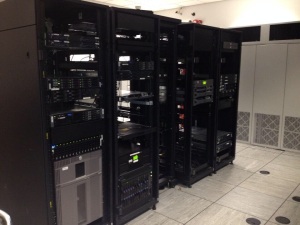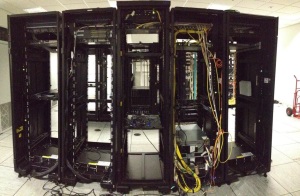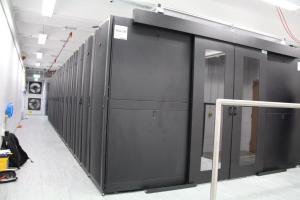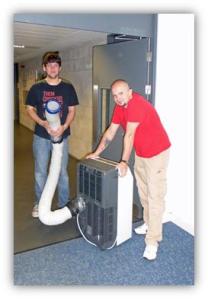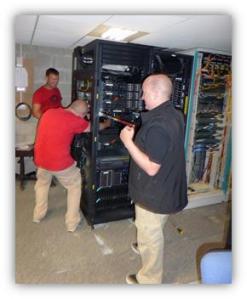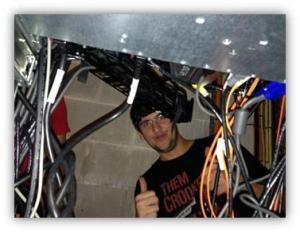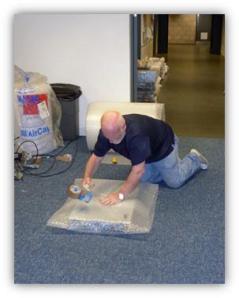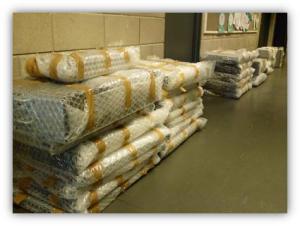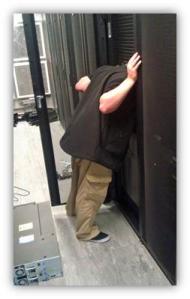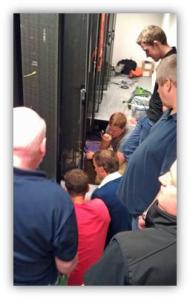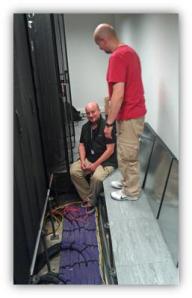The next phase of construction in our Riverside East building – the new Scott Sutherland School – is now nearing completion. This has been built as a new wing onto the south of the existing building, and will house the School and the Faculty Office for the Faculty of Design and Technology. Early in June, the contractors expect the building to be ready for the University to start fitting out with its own furnishings, equipment to make it ready for occupation from July. Have a look at Daniel Doolan’s blog for some great photos of the construction work for this project – and indeed the rest of Riverside East.
One of the most important tasks in getting the building ready is the installation of the IT and Audio Visual (AV) equipment. Some of this has already taken place – the IT network cabling was installed as part of the construction work, and the company installing all the AV equipment has been working alongside the main contractor and much of the AV kit is already in place.
Over the next few weeks, staff from IT Services and the University IT/AV team will be working to install and commission all the remaining IT facilities. These activities can’t really start until the main building work is finished as they depend on a clean environment and the furniture installation.
First of all, IT staff will test the fibre optic connection that links the new building to the rest of Riverside East. The next stage is to start installing the network switches in the communications rooms within the building. The switches connect to the cabling and control all the IT network traffic throughout the building so nothing really works until these switches are in place. It’s not just a question of plugging them in – they all have to be configured correctly to operate with the rest of the University network.
As the switches are being commissioned, IT staff will also be checking out all the AV equipment and making sure that it works across the network. Then, once the furniture arrives and the switches are ready, IT staff can start to install PC’s on staff desks ready for staff to move in. Following this, the WiFi access points will be installed so that WiFi access is available in the new building, the printer/copiers need to be installed and linked up to the network, and PC’s need to be installed in the IT labs and studio spaces in time for students to start using the new building.
This is a busy and very intensive period of work for IT staff and will be a key priority for them over the next two months. We are all looking forward to seeing the new building completed and occupied, and staff and students enjoying a modern new environment for the School!
